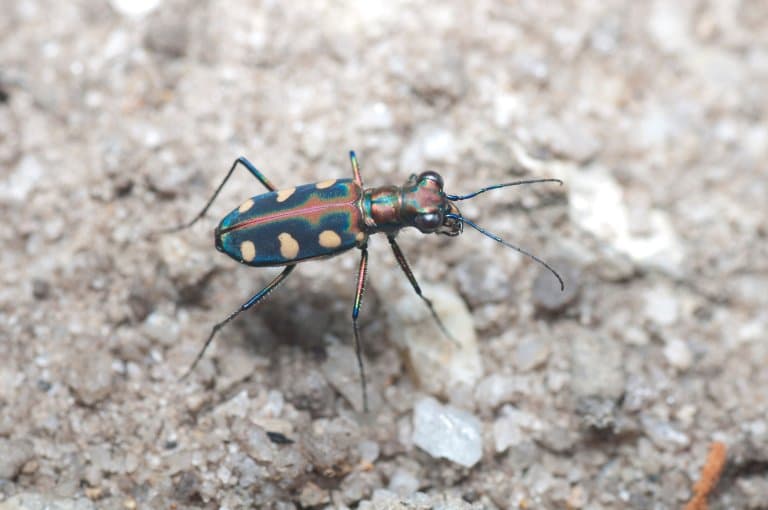World's Fastest Animals
The Fastest Animals on Earth
Measuring an animal’s true speed is difficult, whether it’s on land, in the air, or sea.
In the animal kingdom, animals will often only expend their energy to run, fly or swim as fast as they can when they are either being chased by a predator, or are chasing their next meal.
Much like the way that fish miraculously got smaller when tape measures were introduced, animal speeds appear to be slower than they are commonly reported when closely studied.
Striving for accuracy, we’ve reviewed verified animal speeds to bring you the definitive fastest animals on the planet for various categories, including fastest on land, in flight, and in the sea.
Fastest Land Animal
Cheetah (Top Speed: 105 kph / 65 mph)
It will come as no surprise that the cheetah is the fastest land animal in the world.
This animal is an ambush hunter, capable of the fastest sprint recorded. The cheetah’s ability to accelerate is what helps it hit such a high speed before it reaches muscle fatigue.
They can typically reach speeds of up to 105 kph (65 mph), and can go from 0 to 60 mph in just 3 seconds, which is faster than most super-cars. 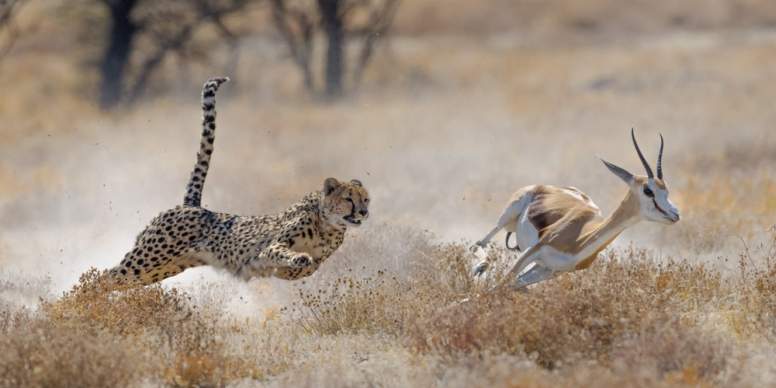
Fastest Long Distance Land Animal
Pronghorn (Top Speed: 100 kph / 62 mph)
If a hunter evolves to run as fast as a cheetah, it’s for good reason. Predators and prey are in an evolutionary arms race to outcompete one another. As such, the second-fastest animal recorded is an animal that often needs to get away quickly.
While they might be a few seconds behind the cheetah in outright speed, the pronghorn can sustain it over a longer distance, and is capable of running 65 kmph (40 mph) for at least 11 km (7 miles).
They’re able to achieve these feats with either extremely efficient musculature, or incredibly effective respiratory transport systems, or both. They have enormous lungs, and hearts four times that of a sheep. 
Fastest Flying Animal in Horizontal Flight
Mexican Free-tailed Bat (Top Speed: 160 kph / 100 mph)
In 2016, researchers recorded the small Mexican free-tailed bat rocketing out of its nesting area at 160 kmph during periods of low to no wind. This suggests there might be a lot more capability in bat flight than previously thought, at least within some species.
This makes the mexican-free tailed bat the fastest flying animal in level flight. They can also fly at heights over 10,000 feet, which also makes them the highest flying bat species in the world. 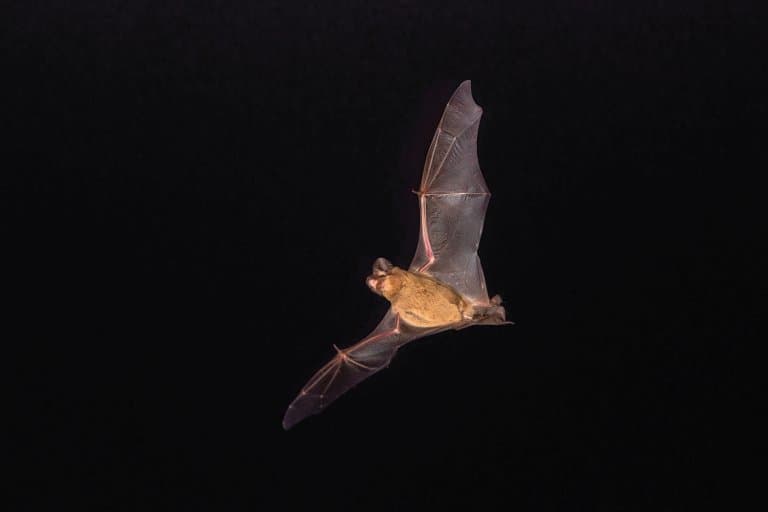
Fastest Bird in Horizontal Flight
Red-breasted Merganser (Top Speed: 160 kph / 100mph)
Ducks are one of the fastest-flying birds around in a straight line, yet their top speeds are still poorly recorded. Somewhat anecdotal reports from train drivers and pilots form much of the recorded data on how fast these birds are, and while these may be dubious sources, their reports are exciting.
In 1960 in Alaska, a group of six red-breasted Mergansers were recorded matching a plane’s airspeed of 100 mph, which is the fastest powered flight of any bird reliably recorded.
While we believe this would make it the fastest flying bird, the grey-headed albatross currently holds the record for fastest bird in level flight, according to the Guinness World Records.
French and British researchers working in the sub-Antarctic recorded a satellite-tagged, grey-headed albatross at flying speeds of 127 kph (79 mph). There is one caveat to this, it was during an Antarctic storm and may have been helped by wind.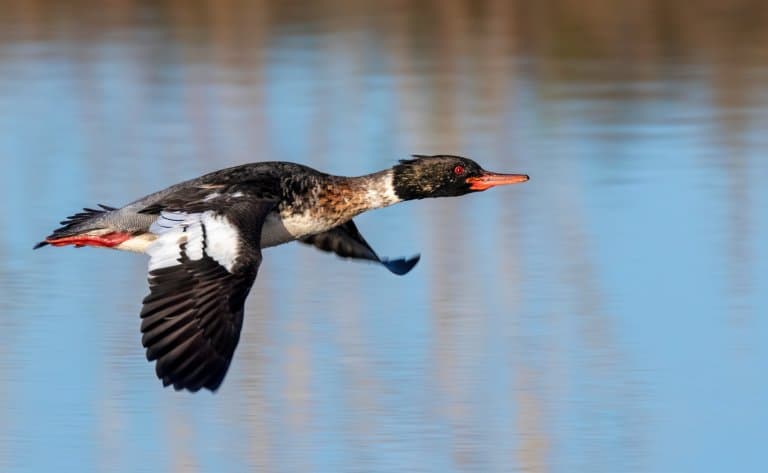
Fastest Bird (including Diving)
Peregrine Falcon (Top Speed: 389 kph / 242 mph)
The peregrine falcon can fly at speeds of up to 95 kph (60 mph) in level flight, which is impressive, but not the fastest bird in the sky.
However, they are the fastest bird in the world when performing dives or ‘stoops’.
They have been recorded diving at an incredible speed of 389 kph (242mph), which is in the Guinness Book of Records and also makes it the fastest bird and animal in the world – if you think using gravity is fair. 
Fastest Bird on Land
Ostrich (Top Speed: 70 kph / 43.5 mph)
Ostrich are capable of reaching speeds of 70 kph in when running, which makes them the fastest animal on two legs and fastest bird on land.
They can also run for up to 2 km on a flat surface at speeds of around 55 kph (34 mph). Their long legs allow them to cover up to 15-feet in a single stride and their light frame makes them very efficient at using energy. 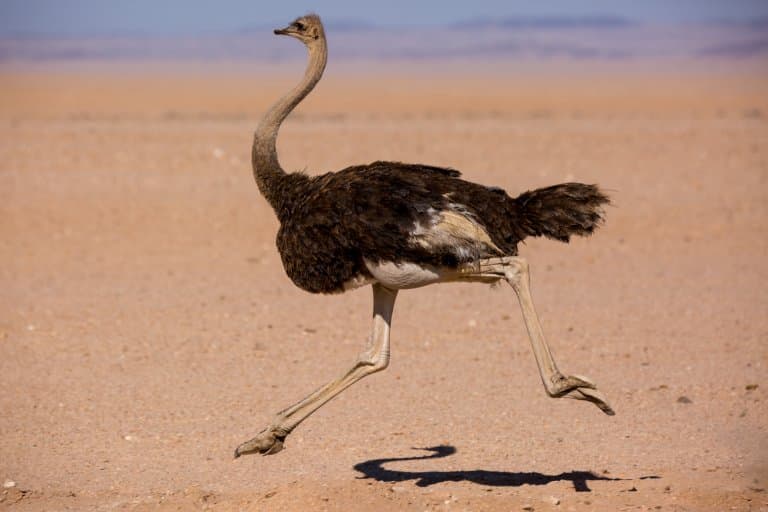
Fastest Fish
Sailfish (Top Speed: 35 kph / 22 mph)
The sailfish is a beautiful, fast-moving and muscular predator that’s always on the move. It can accelerate at tremendous rates, hunts in large groups and covers incredible distances.
Early estimates of the speed of sailfish from the ‘40s suggested it could swim at bursts of up to 67 mph, making it significantly faster than pretty much everything in the ocean.
From this, somewhat less-diligent wildlife bloggers have been spotted making claims of upwards of 70 mph for the top speed of these fish. Some even convert that to km/h and forget to change the unit, so the internet is riddled with exaggerated and inaccurate claims about just how fast this fish can swim.
More recent assessments, however, have offered much more conservative estimates of around 15.7mph, or 25.2 km/h, with a physical limit on top speed, suggested to be up to 35km/h.
This is substantially lower than the previous estimates, but is still incredibly fast for a fish, and comes from the most accurate measurements available so far.
In a series of tests using a fishing cam in Florida, a sailfish swam and leapt 91 meters (300 ft) in 3 seconds, which would be the equivalent of 109 kph (68 mph). However, this included leaping out of the water, which is not really swimming!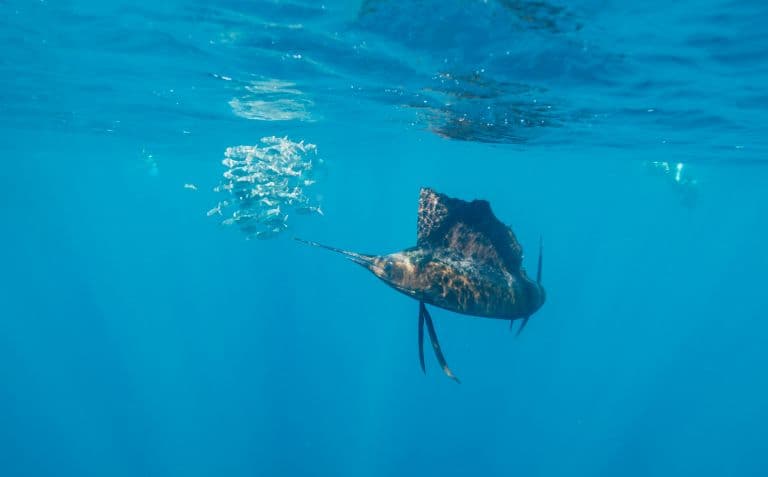
Fastest Flying Insect
Horse-fly (Top Speed: 145 kph / 90 mph)
The Hybomitra genus of horsefly have been observed performing incredible aerial manoeuvres similar to those performed by fighter jets.
A male Hybomitra hinei wrighti horsefly was measured by by researchers using interpolation of slow-motion cinematography, reaching a record speed of 145 kph during a pursuit of a female.
This makes the humble horse-fly the fastest insect in the world, but whether this claim should mean the it deserves to be included in our fastest flying animals in the world piece, is up for debate. 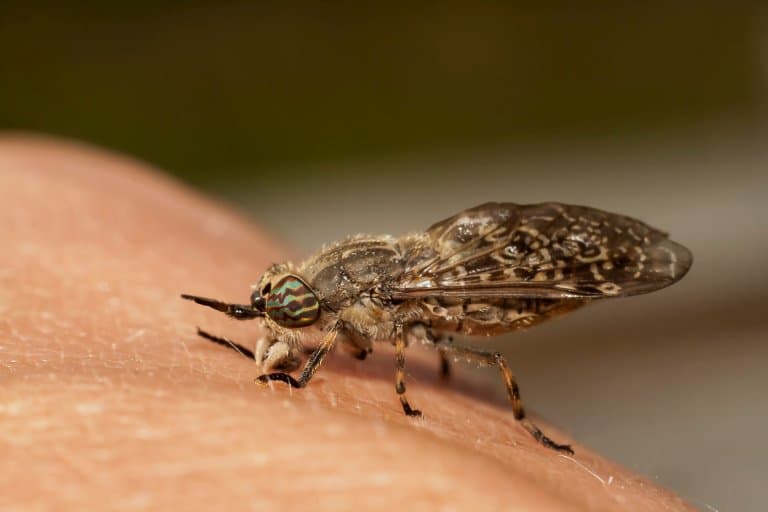
Fastest Insect on Land
Australian Tiger Beetle (Top Speed: 9 kph / 5.6 mph)
The fastest insects on land were thought to be cockroaches, however the fastest verified species of all insects, is Cicindela hudsoni, an Australian tiger beetle, that’s capable of running at 2.5 metres per second (9 km/h; 5.6 mph per hour).
This doesn’t sound very fast but the tiger beetle is obviously small, which means it’s moving at a relative speed of 171 body lengths per second.
If a 6-foot tall person were able to run 171 body lengths per second, they would be traveling at 1,160 kph (720 mph).
Fastest Reptile
Perentie (Top Speed: 40 kph / 25 mph)
The perentie is the largest monitor lizard, and native to Australia. It’s one of the largest lizards on earth, growing up to 2.5m (8ft 2) long and weighing as much as 20 kg (44 lb).
They are extremely fast sprinters and run using either all four legs, or just their hind legs! The animal is able to expand the side of its neck to pump large volumes of air into its lungs while running.
Final Thoughts
So, these are the fastest animals in the world that we could reliably verify.
It’s fun to put animal speeds into perspective and compare them against the fastest absolute speed recorded by a human.
This was Usain Bolt who recorded a top speed of 47.6 kph (29.5 mph) during a sprint. His average speed was quite a bit slower at just 37.6 kph (23.4 mph).
Although this is incredibly fast, this wouldn’t put Usain at the top of any of the fastest categories above – with animals evolving to be much faster than humans!
Perhaps humans would be faster if they had more predators that chased them? There are some benefits that have allowed us to be comparatively slow!
Fact Sources & References
- N. C. C. Sharp (2009), “Timed running speed of a cheetah (Acinonyx jubatus)“, ZSL.
- Stan L. Lindstedt, James F. Hokanson, Dominic J. Wells, Steven D. Swain, Hans Hoppeler & Vilma Navarro (1991), “Running energetics in the pronghorn antelope“, Nature.com.
- Gary F. McCracken (2016), “Airplane tracking documents the fastest flight speeds recorded for bats“, The Royal Society.
- Max C. Thompson (1961), “The Flight Speed of a Red-breasted Merganser“, The Condor.
- Fastest bird (diving), Guiness Book of Records, 2005
- ABOURACHID, A., & RENOUS, S. (2008), “Bipedal locomotion in ratites (Paleognatiform): examples of cursorial birds“, Sci Hub.
- J.H. Byrd (1994), “Chapter 1: Fastest Flyer“, University of Florida.
- Fastest insect on land, Guiness Book of Records, 2016.

